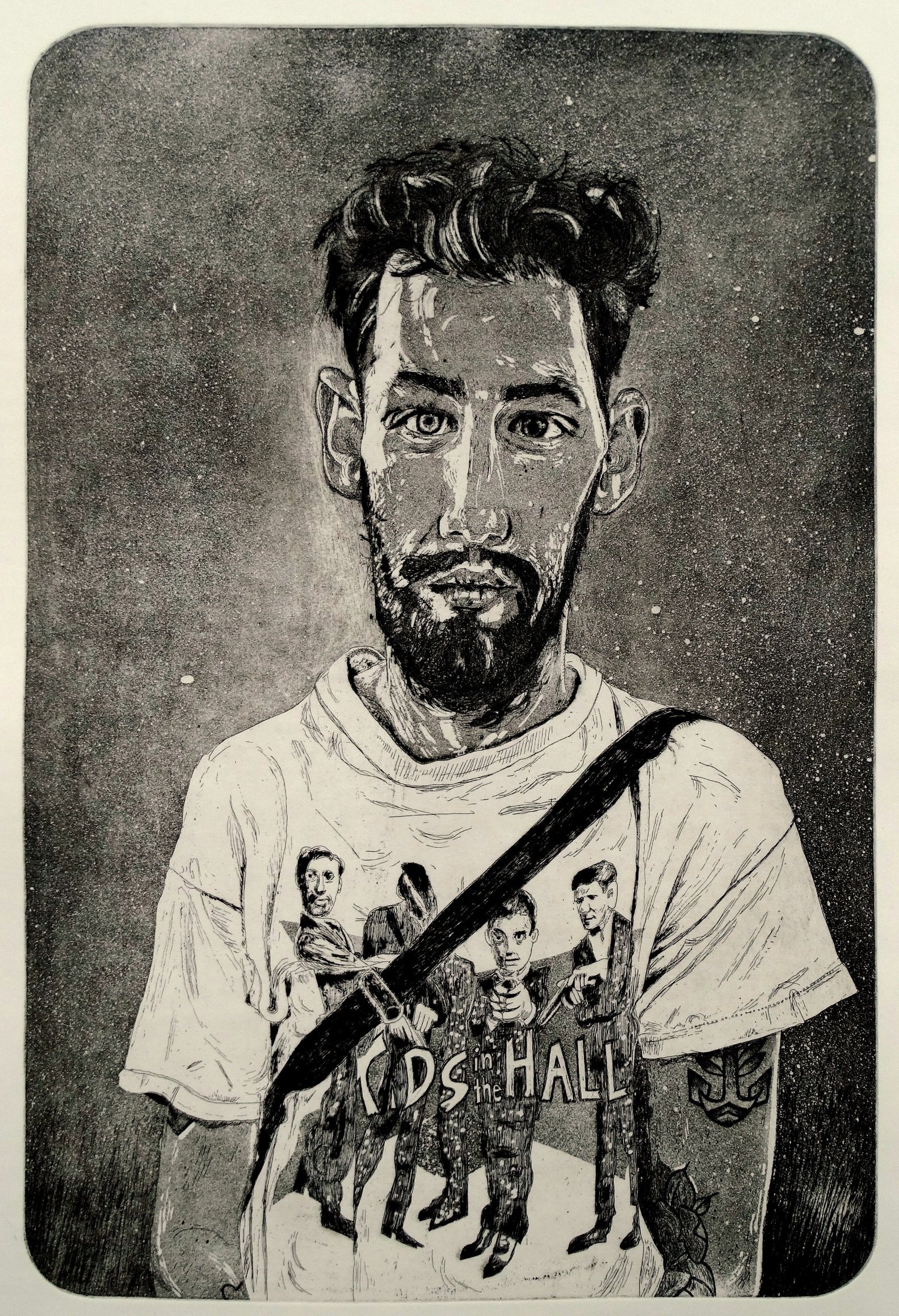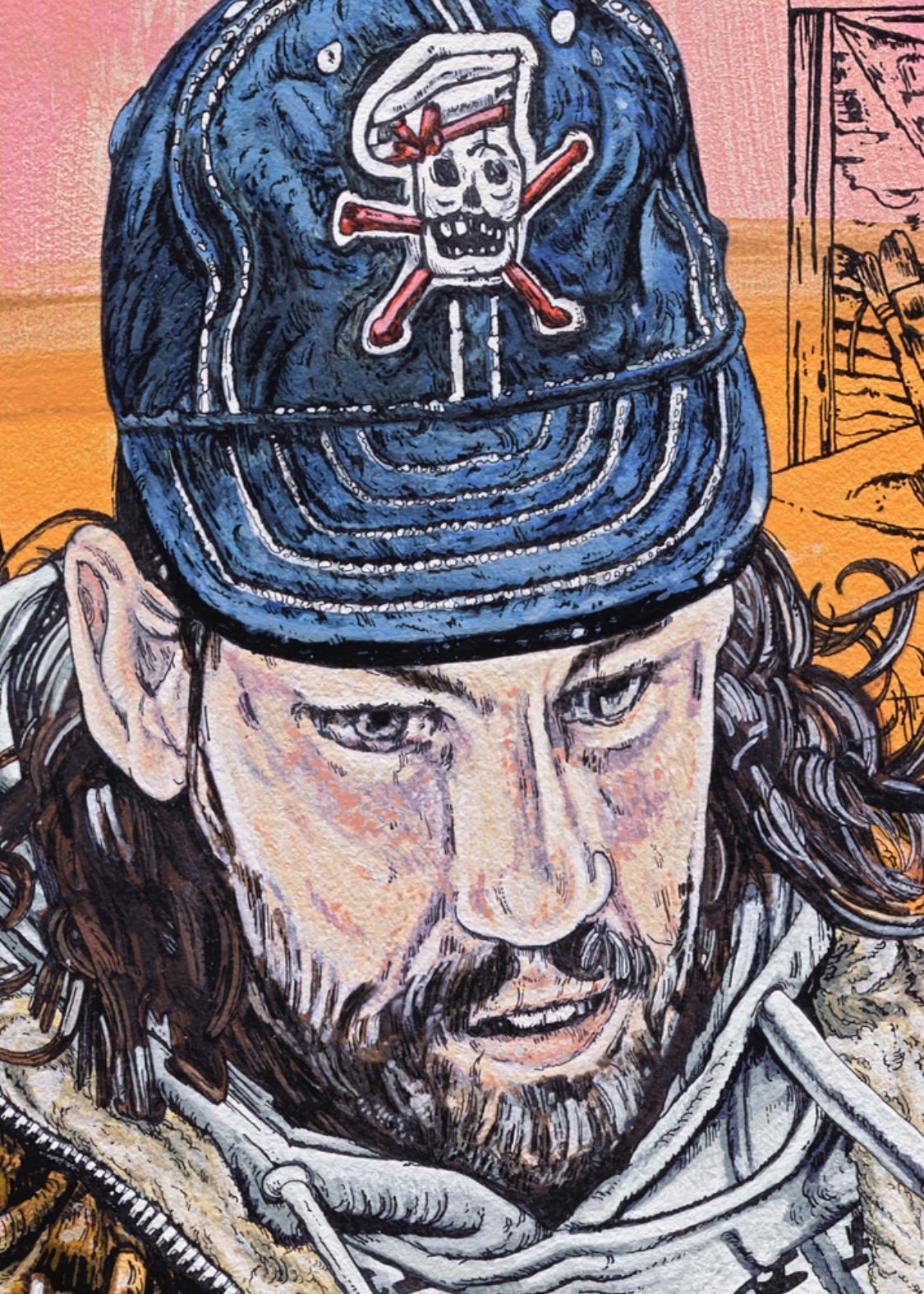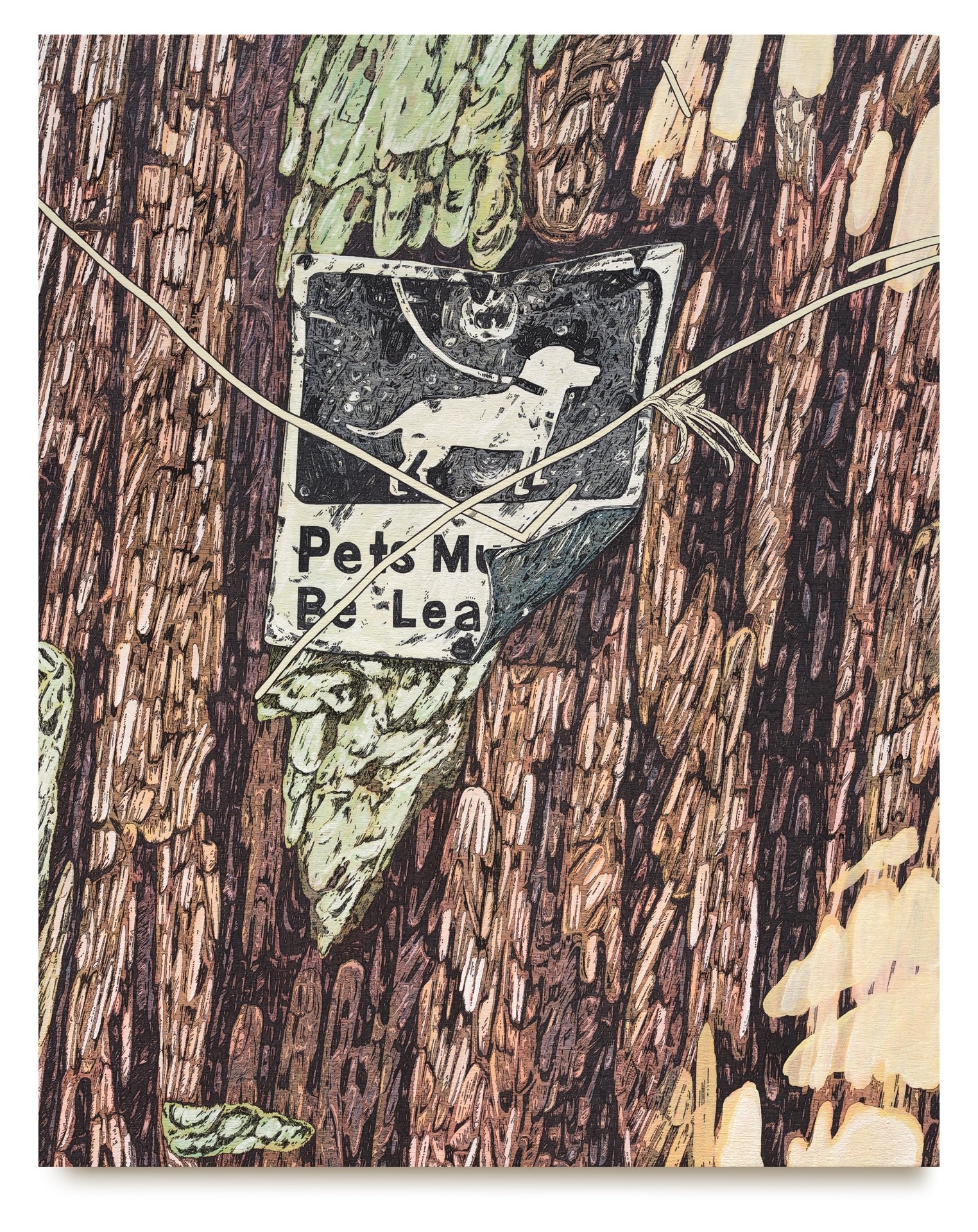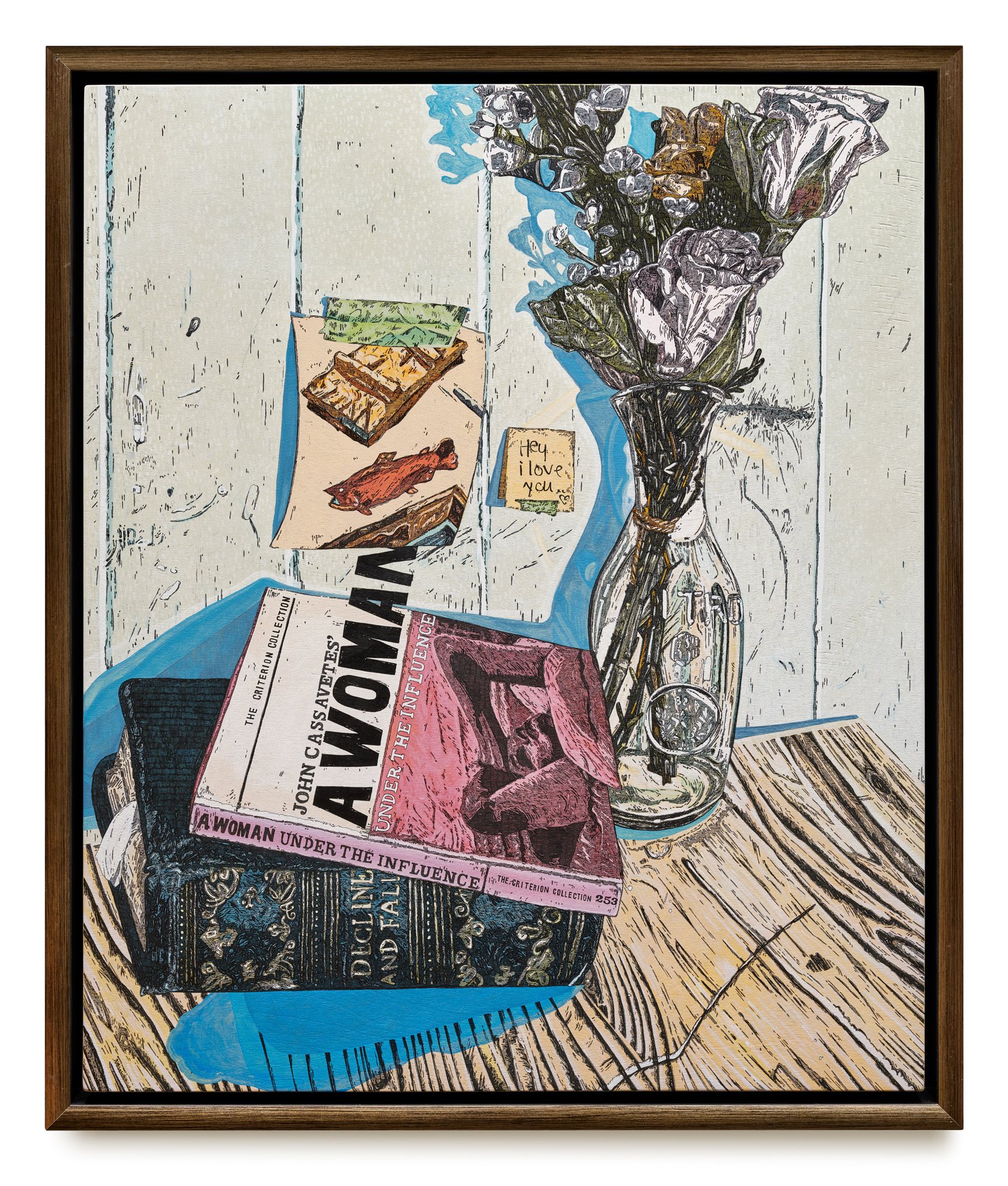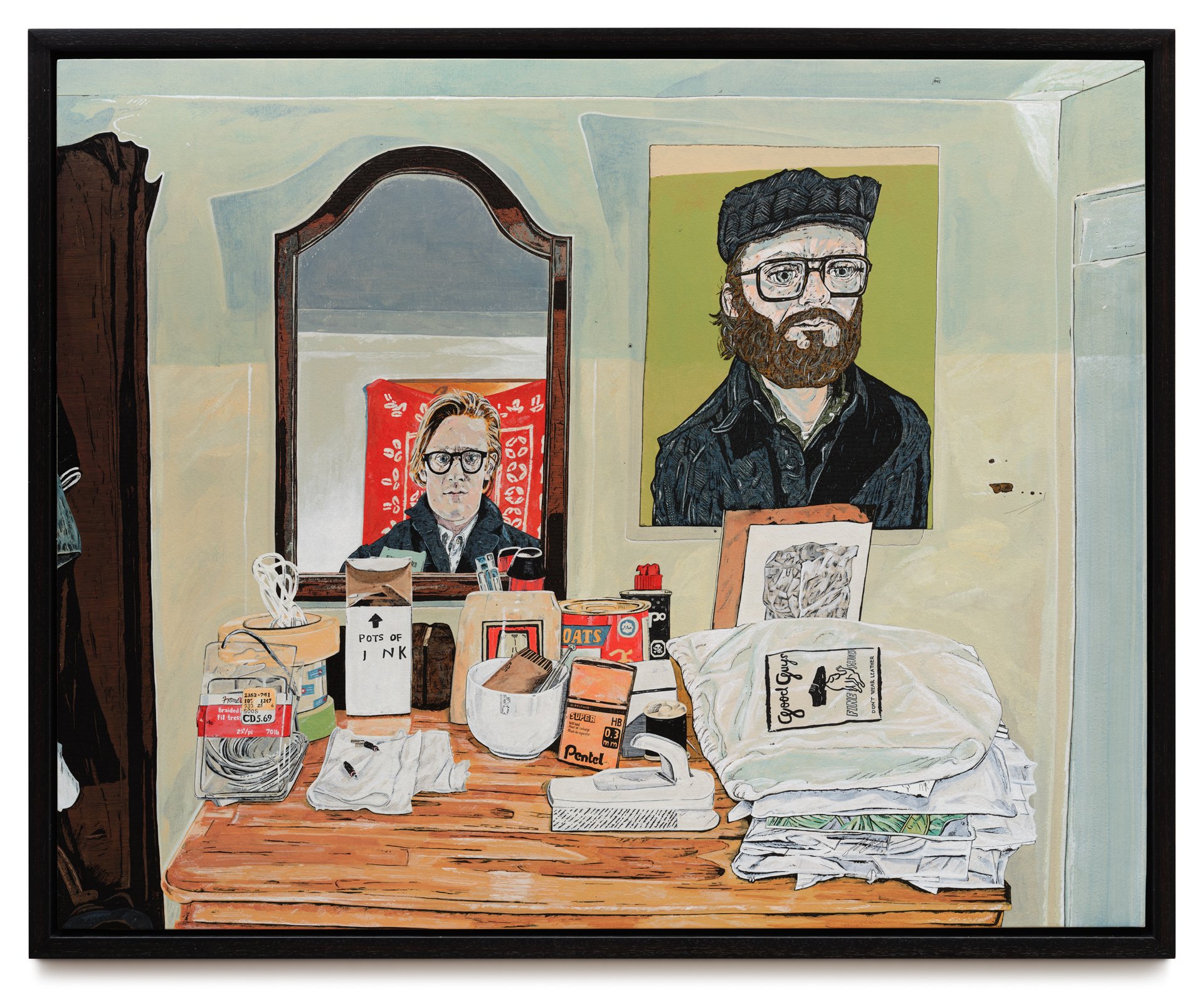ARTIST INTERVIEW: Andrew James Mckay
Tell me about yourself. What inspired you to become an artist?
My name is Andrew James McKay and I’m a painter and printmaker working out of Vancouver, Canada. Becoming an artist had in one way to do with my being at one point a double major in sociology and history. I was searching for a means to study and/or engage with the breadth of human experience, and the university I was at didn’t have an interdisciplinary department that would facilitate my interests in the way I was after. Being an artist was less limited and gave me the freedom to pursue these interests without the fetters of dealing with this academic department or that.
How has your work developed since the beginning of your career to now? What do you believe makes your work unique?
At a crawl, I feel significant or valuable developments seem to come only through hour after hour, year after year, through steady and consistent work. I think this is to do with wanting all aspects to feel integrated, and not to have a ‘development’ superimposed on my existing approach for the sake of novelty. I like the slowness though! I think if the conclusion of my work turns out to be something good, well I’ll enjoy the long road there. And if it’s something bad? What madman wants to rush headlong toward that?
Regarding any uniqueness my own pictures might have, I don’t think of them as being especially unique. Not insofar as uniqueness is a relational condition: what distinguishes uniqueness is only relative to what it’s being measured against. Everything is unique really, and in the case of artwork even if I’m not immediately drawn to the work of another artist, I try to have a real look at it to learn what’s special or unusual or distinct about it.
What do you look for in a potential figure to paint? What do you believe are the characteristics of a strong composition?
Almost everyone you might meet has something marvelous about them, and this only becomes intensified if you’re working with them on a painting. The time involved or required can bring a lot forward. When I first set out, I might be drawn to a particular feature, or a person’s outlook, or I’m curious about the idea of recording the indicators of a gestural life.
I’m not a big ‘composition’ person if I can say that. I know as with some colours, forms, references to contemporary images and symbols... all of these things have their well-known impacts and reactions. Clever compositions are no different for me, and when I start a picture it’s often I just jump in and start doing a drawing somewhere on the panel. Maybe this paves a way ahead, and maybe it puts me in a great big pit I have to work my way out of - both have their benefits.
How does your use of mixed media reflect the narrative of your pieces?
I just never wanted to be limited as far as mediums and my use of them. If I’m working away on a painting and feel it could use the mark made by a pencil, it’s a bit virtuosic to sit there and reproduce in paint when graphite could do that much better.
Describe your creative process for creating your etching, ‘Kyle’. How did the piece develop from start to finish?
Kyle (https://www.instagram.com/kylestew.art/) had done a small self-portrait on tracing paper in Sharpie and pencil crayon. I’d liked it a lot for the immediacy of it and for the sense of what it conveyed. He came to visit me at the studio I had at the school I was doing my BFA at, and I got started on an etching informed by his portrait—a kind of visual response to something I’d been so impressed by. I worked the etching plate more quickly than others I’d been engaged with that term, thinking that this was important.
Five years later I’m now in the process of doing another portrait of Kyle for a series of artist-on-artist portraits: he’s also doing my picture. It’s different from the etching, but then after five years a lot has changed. The new painting reflects that.
What does a typical day look like for you in the studio?
It varies day-to-day, but mostly it’s getting up early and working until late at night. The pictures I’ve been doing are so labour-intensive that if I’m not on top of it, the work suffers. I make a point to get out though, and anything between a morning walk in the neighbourhood to a trip to the interior or to the islands is a welcome respite. Because my work is both figurative and centred on my experiences as a person in the world, it would be impossible to be in the studio and live a hermetic kind of life there.
How does your artwork represent you as an individual? Are you a perfectionist?
Not a perfectionist, but it’s a common misappraisal. Did you ever look at a houseplant and see the way in which it always grows toward where the sun is? What I’m reaching for in my own work is akin to this heliotropic reaching. A striving can be interpreted as perfectionism, but in reality I think of the motion involved as being more instinctual than it is a drive to convey what we think of as perfect.
Out of all your artwork, which piece are you most proud of and why?
I’m wracking my brain here and can’t come up with any one piece. When I finish a picture it’s less a feeling of pride and more to do with the relief that it’s a wrap and I can go on to the next idea which has been brewing, as I near completing whatever I’ve been toiling away at.
What has been your biggest achievement so far as an artist? Have there been any challenges?
In this economy?! It’s all challenges! Haha.
Each achievement is just a step to the next picture, one following the other. If I’ve achieved anything it’s just my being able to have done it this long, to’ve kept the plates spinning, and to not have become too stuck in my ways or habits, in a way which would hinder the work.
Why do you think art is important in society?
We’re facing a lot of hardships in our society and culture, so many people are doubtful of what the future has to hold, and it can feel like the spinning top is winding down and getting wobbly. Art is important because if it’s any good, the imagination involved in it might point to alternatives. That even though it doesn’t appear there are options to move ahead, we’re in many ways only limited by what we can envision and make a reality.




